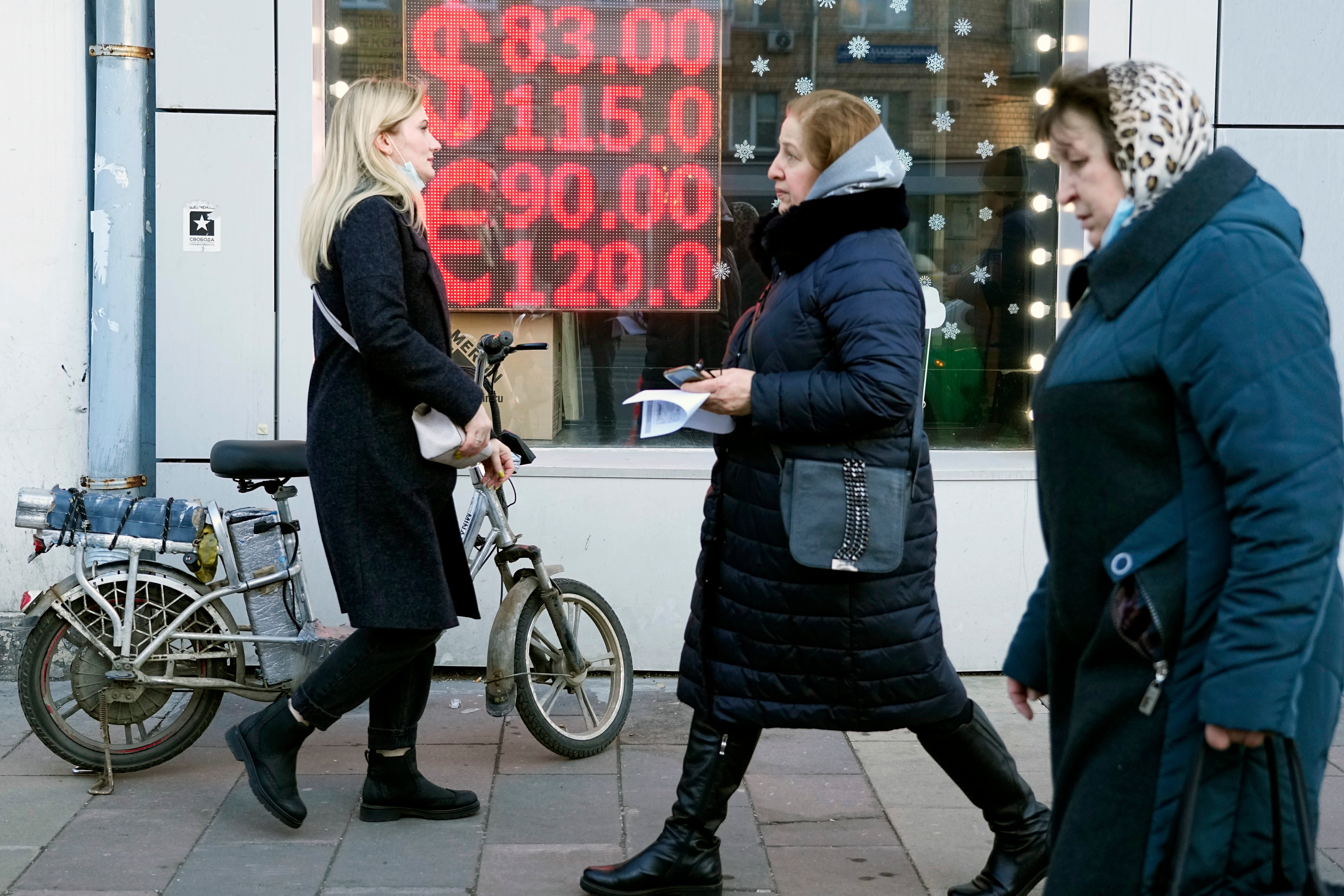Treasury bars Russia payments in dollars from US accounts
The Treasury Department will not allow any Russian government debt payments from accounts at U.S. financial institutions to be made in U.S. dollars, an agency official says

Your support helps us to tell the story
From reproductive rights to climate change to Big Tech, The Independent is on the ground when the story is developing. Whether it's investigating the financials of Elon Musk's pro-Trump PAC or producing our latest documentary, 'The A Word', which shines a light on the American women fighting for reproductive rights, we know how important it is to parse out the facts from the messaging.
At such a critical moment in US history, we need reporters on the ground. Your donation allows us to keep sending journalists to speak to both sides of the story.
The Independent is trusted by Americans across the entire political spectrum. And unlike many other quality news outlets, we choose not to lock Americans out of our reporting and analysis with paywalls. We believe quality journalism should be available to everyone, paid for by those who can afford it.
Your support makes all the difference.The Treasury Department will not allow any Russian government debt payments from accounts at U.S. financial institutions to be made in U.S. dollars, restricting one of the strategies President Vladimir Putin is employing to stave off default, an agency official said Tuesday.
Russia faced an April 4 deadline to make another debt payment. The Kremlin must now choose between draining remaining valuable dollar reserves, new revenue coming in or default, said the official, who spoke on the condition of anonymity because the official wasn't authorized to speak on the record.
The Treasury decision comes after the agency previously said sanctions levied on Russia over its invasion of Ukraine still permit Russia to continue to make debt payments. The debt is owed to foreign investors, among others, and comes from government investments to presumably spur economic growth in Russia.
Russia is currently facing skyrocketing inflation, shortages in essential goods and disrupted trade with the rest of the world as it continues its invasion of Ukraine.
While the ruble has bounced back from the fall it took after the U.S. and European allies moved to bury the Russian economy, Putin has resorted to extreme financial measures to blunt the West’s penalties and inflate his currency.
Western sanctions from the war have placed severe restrictions on banks and their financial transactions with Russia, and also have frozen much of the government’s reserves of foreign currency.
The West has cut key Russian banks out of a financial messaging system known as SWIFT, which is used every day to route billions of dollars among more than 11,000 banks and other financial institutions around the world. Sanctions have been issued on Russian leadership, oligarchs, trade and natural resources, and the country's central bank.
The U.S., EU and United Kingdom have limited the ability of Russia’s central bank to draw on more than $600 billion in foreign currency reserves and have frozen its gold reserves. That has left the central bank with few tools to prop up the ruble and prevent it from crumbling in value.
The decision to stop bond payments will further deplete the resources Putin is using to continue his war against Ukraine and will cause more uncertainty and challenges for Russia's financial system, the Treasury official said.
Once a country defaults, it can be cut off from bond-market borrowing until the default is sorted out and investors regain confidence in the government’s ability and willingness to pay. Additionally, holders of the bonds could take serious losses.
Russia’s government can still borrow rubles at home, where it mostly relies on Russian banks to buy its bonds.